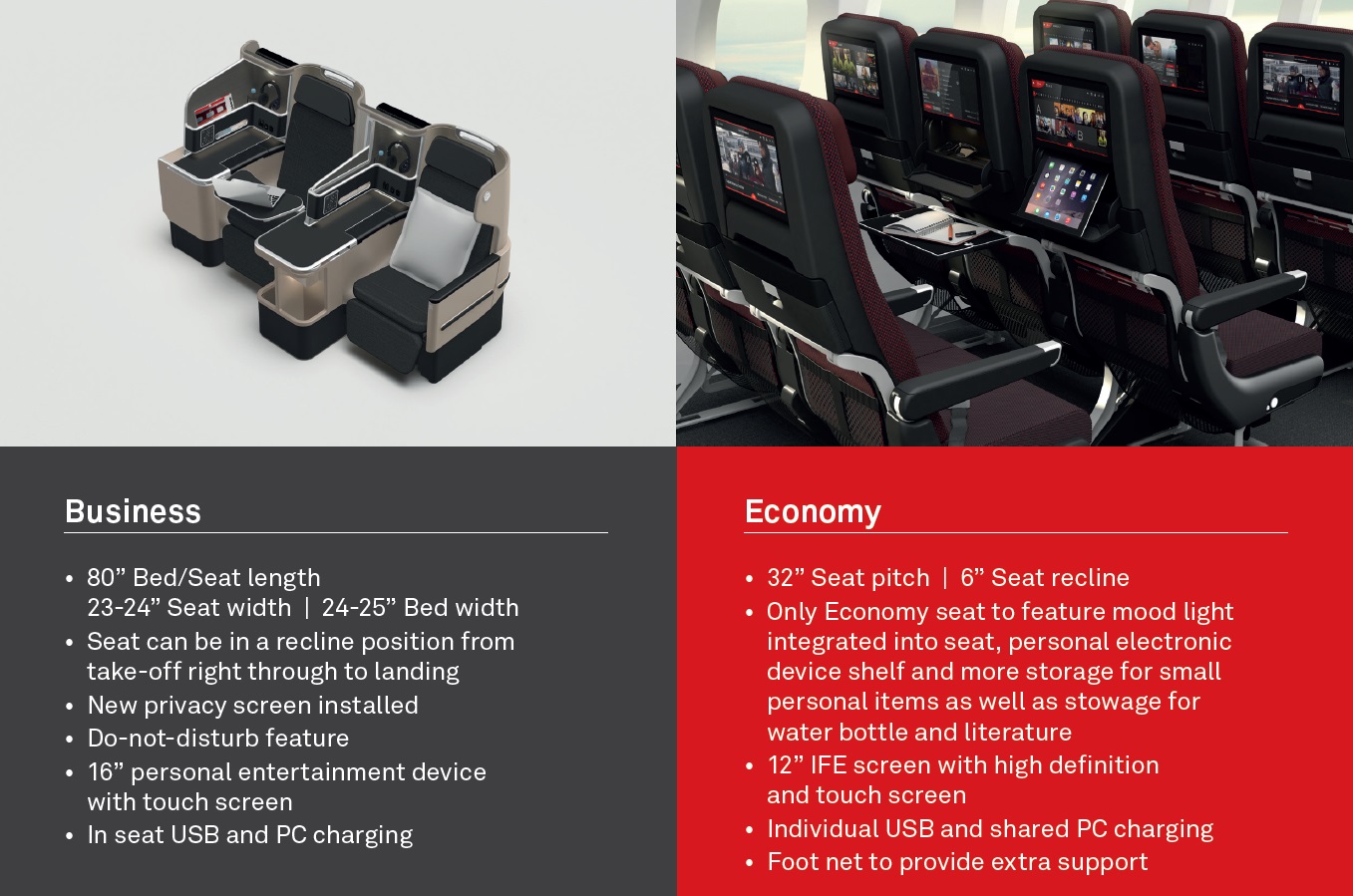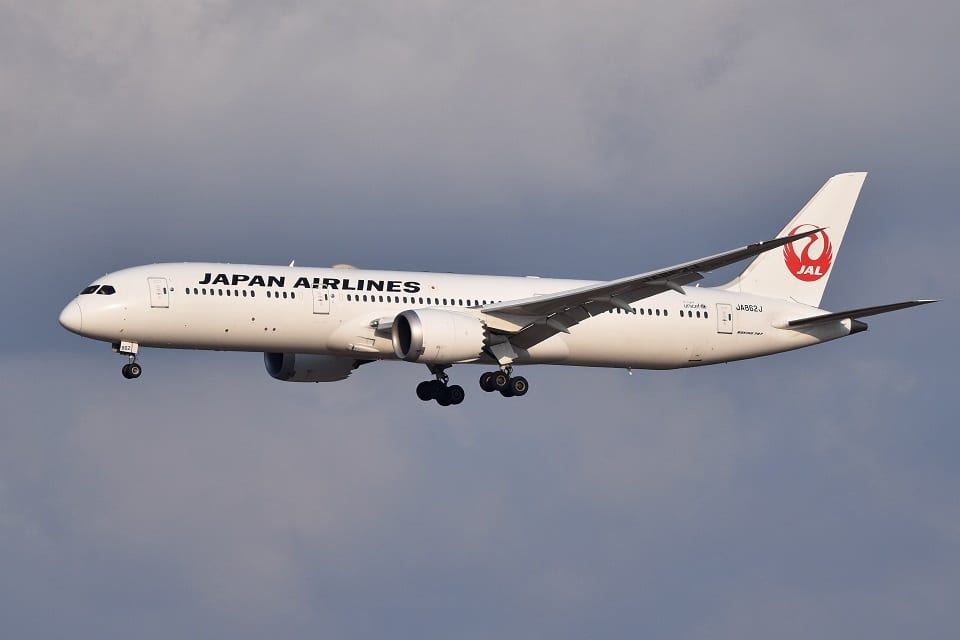Aviation
Qantas unveils next generation cabins for 787 Dreamliner.

Qantas has unveiled what customers onboard its flagship 787-9 Dreamliner can expect when the aircraft arrives in a year’s time.
The Qantas Dreamliner will seat 236 passengers across Business, Premium Economy and Economy cabins in a layout that has been designed to maximise comfort for the longer distances the 787-9 is expected to fly.
The Business Suite is the next generation of the very popular seat recently installed on Qantas’ Airbus A330 fleet. These suites are known for providing a high level of privacy, made more flexible on the 787 with the ability to now adjust the divider between each seat.
The suites also have a fully-flat bed and offer plenty of space to eat, work or relax. Laid out in a 1-2-1 configuration, each suite has direct aisle access as well as the ability to stay reclined during take-off and landing.
Economy passengers will also have more room – including an extra inch of seat pitch compared with the national carrier’s A380 – and an all-new seat. It features a new personal device holder and USB ports; more storage areas; a seat-back mood light designed to minimise disturbance for other passengers; and a high-definition entertainment touchscreen that is five per cent larger.

The seats also feature an updated version of the popular Qantas ‘footnet’ first introduced on the A380, designed to cradle the legs during sleep.
Unveiling the Business and Economy seats in Sydney today, Qantas Group CEO Alan Joyce said the interiors had been carefully designed with longer routes and changing passenger preferences in mind.
“The Dreamliner is an aircraft built for comfort. The windows are bigger, it helps reduce jetlag, it’s extremely quiet and there’s a system that smooths out turbulence. Customers are going to love it,” said Mr Joyce.

“We’re planning to make the most of the 787’s amazing range, so we’ve designed the cabin to give Qantas passengers a better experience on long haul flights.
“Many of the cabin design elements reflect what our customers have told us. Personal storage rates really highly, so we’ve created extra space in Economy for customers to store their personal devices and water bottles.
We’re proud that our new Economy seat includes features other carriers reserve for Premium Economy.
“We’re also redesigning the in-flight experience for the Dreamliner, from rethinking our menus to making better use of the self-service bars during different phases of flight,” added Mr Joyce.
The Dreamliner cabin interiors and new economy seat, designed by Australian industrial designer David Caon, are a progression of the Qantas aesthetic established by Marc Newson.
Detail on initial Qantas Dreamliner destinations will be revealed in coming months, with the first international flights on sale before Christmas. The aircraft will gradually take over routes currently operated by the airline’s B747 fleet as well as adding new city-pairs to the Qantas International network.
The Dreamliner’s Premium Economy cabin, which will offer a class leading experience and a revolutionary new seat, will be unveiled in early 2017.
Find out more about the features of the Qantas Dreamliner in this factsheet (opens in new window).

Aviation
This international airline is offering free flight tickets to Indian travelers

Looking for a unique travel opportunity? Japan Airlines is making it easier for international travelers, including those from India, to explore beyond Japan’s most famous spots with an exciting new offer.
If you’re planning to visit Japan, this could be your chance to discover more of the country, all while enjoying a free domestic flight.
Airbus Final Assembly Line Adapts for A350 Freighter Production
According to reports, Japan Airlines is offering complimentary domestic flights to any destination within Japan when you book an international flight with them.
This special offer is available to travelers from several countries, including India, as well as the US, Canada, Mexico, Thailand, Singapore, New Zealand, Australia, Vietnam, the Philippines, Indonesia, and select cities in China, Taiwan, and other parts of Asia.
Three Major UK Airports Up for Multi-Billion Pound Sale
To take advantage of this offer, all you need to do is book both the international and domestic flights as part of a single reservation. The offer is only valid for flights operated by Japan Airlines, although certain codeshare flights may not be eligible.
It’s worth noting that if you have a stopover in Japan lasting more than 24 hours, additional charges may apply depending on your departure country. So, if you’re looking to explore Japan in more depth, now is the perfect time to plan your trip with Japan Airlines and take advantage of this fantastic offer.
-

 Aviation2 months ago
Aviation2 months agoMicrosoft Flight Simulator Raises $3 Million to Bring Back the An-225 Mriya
-

 Airlines2 months ago
Airlines2 months agoQatar Citizens Can Travel to the United States Without a Visa
-

 Aviation2 months ago
Aviation2 months agoQatar Airways bans these new Electronic Devices on plane
-

 Defence2 months ago
Defence2 months agoWhich Country Has the Largest Fleet of Fighter Aircraft?
-

 Airlines5 days ago
Airlines5 days agoDAMAC Air: Dubai’s New Luxury Airline Offers Free Flights for Registration
-

 Airport2 months ago
Airport2 months agoWestern Sydney Airport Welcomes Its First Plane After 6 Years of construction
-

 Airlines4 days ago
Airlines4 days agoAir India to Launch aircraft maintenance training institute in Bengaluru
-

 Aviation2 months ago
Aviation2 months agoDid you know ? Once Boeing 747 carried 1088 passenger in 1991








